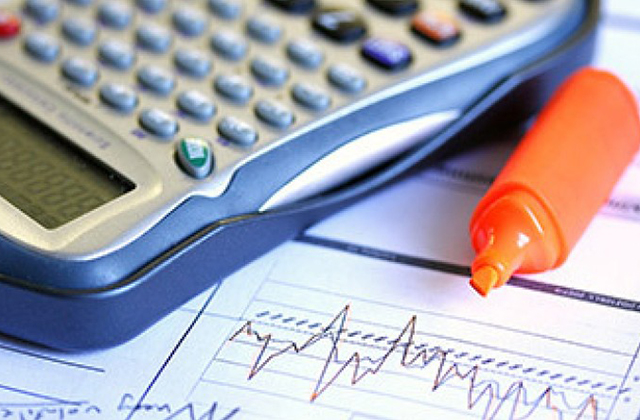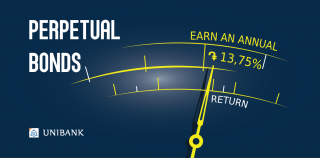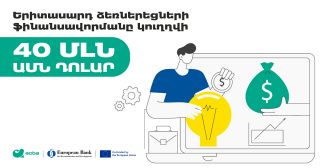
First Months are both Encouraging and Concerning

RA National Statistical Service (NSS) concluded detailed data of macroeconomic indicators. On the one hand, they are encouraging, and there are rather concerning amendments on the other.
Firstly it’s worth starting from GDP. As we know, as compared to the former one, NSS presently introduces GDP indices on a three-month basis. Real growth of January-March of ongoing year of gross domestic product (GDP) as compared to the same period of the previous year comprised 4.4%. GDP volume in the reporting period comprised AMD 898.2 billion. GDP per capita in the first quarter comprised AMD 299 761 or USD 613.
This is a bad indicator on account of the fact the Government was anticipating 2.2% economic growth for 2016, and the World Bank and International Monetary Fund (IMF)—1.9%.
Main branches contributing to the development are industry and services. This is good. However, in case of in-depth analysis it turns out that mining contributed to the growth, and from the field of services—increase of visits to casinos.
Another indicator stingily introduced by the NSS refers foreign investments. Here the snapshot is rather bothering (slightly said).
In the period of the first quarter of 2016 in real sector of Armenia’s economy net inflow of foreign direct investments (FDI) comprised AMD 15 billion as compared to the same period of the previous year (AMD 35.3 billion). Thus, net inflow of FDIs decreased by AMD 20.3 billion or 2.3 times. Moreover, AMD 17.8 of FDI net inflows is that of Russia. In case of France and Luxemburg FDG net inflow has negative value, i.e. the capital more flowed to those countries (France—USD 2.4 million, Luxemburg—USD 3.3million).
Foreign trade indicators have formerly been touched upon, however, as you remember Armen Alaverdyan, Deputy Head of the State Revenue Committee (SRC), informed days ago that misprint of two importing companies was recorded: instead of AMD 30 million, AMD 30 billion was enshrined, as a result of which import number was not correctly reflected.
It’s worth reviewing indices of foreign trade upon updated data. Export in the period of January-April 2016 as compared to the same period of the previous year grew by 22.2%, comprising USD 514.4 million.
Import, just the contrary, decreased by 3.5%, thus, comprising USD 943.2 million. Note, upon preliminary data issued on May 20, volume for January-April 2016 was stated USD 1 billion 156.7 million. Upon updated data, as already mentioned, it comprises USD 943.2 million. Accordingly, incorrectness of USD 213.5 million was found in the document. By Armenian dram expression it comprises more than AMD 100 billion. This figure is much bigger than that mentioned by the Deputy Head of SRC. It turns out, that more than two importers recorded a misprint, or the mistake by those two was much bigger (instead of AMD 30 million, they wrote AMD 50 billion).
Returning to the updated figures, we may conclude that export has recorded growth, and import has decreased. On the one hand, it’s good: it improves foreign trade balance, and on the other hand, it reduces tax revenues from import, in particular, value added tax (VAT) charged on the border.
This is also enshrined in the official statistics. Throughout January-April 2016 entrance of VAT comprising AMD 116.7 billion to the state budget was recorded. It less by 7.7% from the indicator of the same period of the previous year.
Total tax entrance, however, grew by 1.3% comprising AMD 328.2 billion. Only in April entrance of tax revenue comprising AMD 97.1 billion to the state budget was recorded. This, of course, is less than 100 billion mentioned by the country’s president, however, it’s an unprecedented indicator for April. Budget incomes comprised AMD 101.5 billion (maybe Serzh Sargsyan meant this figure).
Another fact regarding taxes. SRC released a statement, which reads that May wasn’t a bad month either. Tax and customs bodies in May provided AMD 91.7 billion income, which exceeds the index of the same period of the previous year by AMD 5.2 billion. Moreover, SRC particularly highlighted that the growth was provided under shortage of AMD 2.8 billion tax revenues conditioned by decline of import in EEU member countries. Even AMD 4.8 billion decline didn’t affect growth of tax revenues: in tax revenues of a few big companies in the field of metal mining and communications.
Is tax growth good or bad? It depends from which standpoint we observe it. If that growth was recorded due to charging more money from SMEs, of course, it’s not good. And if that growth was provided as a result of reduction of shadows, bringing oligarchs and the advantageous to the tax field (which was hinted by the country’s president), then, surely, it’s only welcomed.
It’s worth touching upon state debt as well. As of late April 2016 it comprised USD 5 billion 252.2 million, which exceeds by USD 56 million as compared to the index of the previous month. From which: external debt during April increased by USD 53.3 million and reached USD 4 billion 459 million.
Topic of the debt being good or bad resembles the story of hen and egg. According to the authorities there is nothing bad in it, if the debt revives economy. Moreover, in their conviction, if we are given debt, it means they trust us, and consider our state non-risky and creditworthy. Supporters of other standpoint, firstly, don’t believe that the debt has brought any benefit to economy. Besides, they fairly mention that its consumption burden lies on the shoulders of taxpayers.
Note, in the period of January-April 2016 AMD 20.2 billion was directed to external interest rate payment (as compared to AMD 12.7 of the same period of the previous year), and to internal interest rates—AMD 7.9 billion.
By Babken Tunyan























